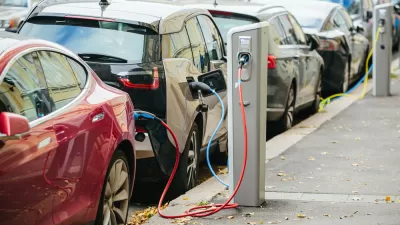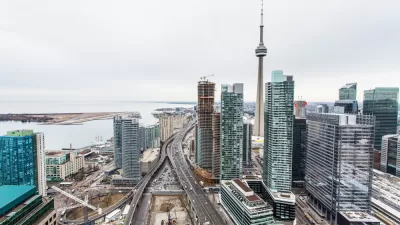Data collection used for planning purposes has traditionally focused on cars, rather than people. So far, innovative transportation technologies seem unconcerned with changing that pattern.

Joe Cortright cautions against the dangers in over-estimating the value of data in planning decisions. Though a believer in using data to inform decision making and problem solving, Cortright reminds us that "sometimes the quantitative data that’s available is too limited to enable us to see what’s really going on." Moreover, "incomplete data can lead us to the wrong conclusions."
Cortright chooses the case study of walkability to examine the shortcomings of traditional planning data. After examining reports of the pedestrian experience in Houston (and similar conditions around the country), Cortright states the problem: "Because we lack the conventional metrics to define and measure, for example, the hardships of walking, we don’t design and enforce solutions or adopt targeted public policies."
Further distorting the focus of planning and engineers is an overabundance of data on car traffic: "we have parking standards, traffic counts, speed studies, and 'level of service standards,'" and "[t]raffic engineers will immediately tell us when a road is substandard, or its pavement has deteriorated, or its level of service has become (or might someday become) degraded."
The implications of Cortright's argument reach into the future, however, and this is where planners have the power to demand more from policy makers. Recall the recent criticism of the city of Columbus' selection for $50 million in grant money from the U.S. Department of Transportation's Smart City competition—awarded for a project proposal that focuses on autonomous vehicles, rather than public, mass transit. Cortright's concern with the priority on self-driving cars and other futuristic technology:
New technology promises to provide a firehose of data about cars, car travel, car delay, and roadways—but not nearly as much about people. This is a serious omission, and should give us pause about the application of “smart” principles to cities and transportation planning.
FULL STORY: The limits of data-driven approaches to planning

Planetizen Federal Action Tracker
A weekly monitor of how Trump’s orders and actions are impacting planners and planning in America.

Chicago’s Ghost Rails
Just beneath the surface of the modern city lie the remnants of its expansive early 20th-century streetcar system.

San Antonio and Austin are Fusing Into one Massive Megaregion
The region spanning the two central Texas cities is growing fast, posing challenges for local infrastructure and water supplies.

Since Zion's Shuttles Went Electric “The Smog is Gone”
Visitors to Zion National Park can enjoy the canyon via the nation’s first fully electric park shuttle system.

Trump Distributing DOT Safety Funds at 1/10 Rate of Biden
Funds for Safe Streets and other transportation safety and equity programs are being held up by administrative reviews and conflicts with the Trump administration’s priorities.

German Cities Subsidize Taxis for Women Amid Wave of Violence
Free or low-cost taxi rides can help women navigate cities more safely, but critics say the programs don't address the root causes of violence against women.
Urban Design for Planners 1: Software Tools
This six-course series explores essential urban design concepts using open source software and equips planners with the tools they need to participate fully in the urban design process.
Planning for Universal Design
Learn the tools for implementing Universal Design in planning regulations.
planning NEXT
Appalachian Highlands Housing Partners
Mpact (founded as Rail~Volution)
City of Camden Redevelopment Agency
City of Astoria
City of Portland
City of Laramie





























